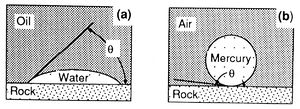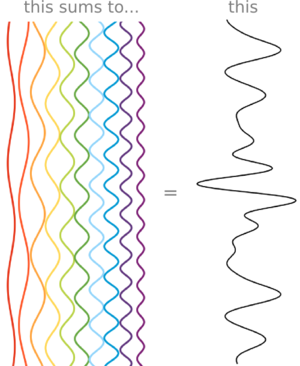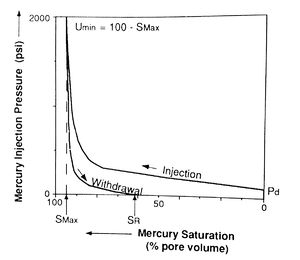Cash flow model
| Development Geology Reference Manual | |

| |
| Series | Methods in Exploration |
|---|---|
| Part | Economics and risk assessment |
| Chapter | Building a cash flow model |
| Author | Robert S. Thompson |
| Link | Web page |
| PDF file (requires access) | |
Intro should go here
Data requirements[edit]
The basis of economic evaluation of any proposed drilling venture—a new field, pool, or just a single well—is the cash flow model of investments, expenses, taxes, and wellhead revenues involved with the project. The values for the parameters in this model must come from a geotechnical analysis (including maps, cross sections, and reservoir analysis) of the anticipated new field or well and from geotechnical estimates of area, ultimate recoverable reserves, and projected well production schedules. Here are the general data that are required:
- All front end costs—leases, geology and geophysics (G & G), overhead, exploration drilling, and completion costs
- Projected dry hole costs
- Ultimate recoverable reserves (including secondary recovery)
- Field area (and thus number of producing wells), unless it's a single-well project
- Typical well production schedules, including initial production, decline rate, and producing life to abandonment
- All development costs, classified for tax calculations as either tangible expenditures or intangible drilling and development costs (IDCs), and scheduled by the month and year
- Annual operating cost per well
- Wellhead prices, wellhead taxes, and transportation costs
- Abandonment costs
- Annual federal income taxes. The model can be adapted for the analysis of international prospects by changing this item in the cash flow model to "outsider's take." Simply apply the tax rules for that country.
- Anticipated price or cost escalation schedule, if any (the example shown in 1 uses the constant dollar concept, thus no price or cost escalation schedule is provided). Inflation (loss of purchasing power) is also assumed to be zero.
- Net revenue interest (NRI) of lease (1.00 - royalty interest) and company share of working interest
- Company discount rate
- Anticipated incremental income tax rate
The procedure is basically to plan out the life of the field, project, or well from the first expenditure through abandonment, assigning costs and revenues to events and dates.
Calculations in the cash flow model[edit]
The net cash flow (NCF) for each assumed time period, including time 0, can be determined using the following equation.
Some of the economic parameters presented later utilize after-tax net operating income (NOI) as a measure of profit. After-tax NOI is defined as follows:
After the revenue and expenditure schedule has been determined, we can now calculate cash income taxes for our project. Finally, once the cash income taxes have been calculated for each year, the cash flow time diagram can be prepared and we are ready to calculate the net present value for our venture. (For an example and explanation of a cash flow time diagram, see the previous chapter on The Time Value of Money.)
For now, let's assume we are provided the cash income tax number, so we are ready to look at an example problem for a single development well. The assumptions for this example problem and a completed worksheet are presented in Table 1. A completed cash flow time diagram is shown in Table 2 along with the equivalent net present value calculation.
The same steps also apply to a multiwell project. Field development projects are constructed by combining individual well models in a realistic time frame. The income tax calculation must be done on a total project basis since oil and gas taxation applies to the total property. An example of a multiwell field extension project is shown in Table 3. Since the project has a longer life than the example development well, the results are summarized in a slightly different format. Table 4 presents the production, investment, and tax assumptions for the multiwell extension project.
Points to remember[edit]
Here are a few final points that are important to remember concerning cash flow models:
- Cash flow analysis is the third step in evaluating a proposed (or existing) petroleum property; it occurs after estimating (a) the reserves, rates, and costs and (b) the chance of success.
- Do not carry out cash flow analysis of "risked reserves"—the cash flow model is built on the success case
- Net cash flow is the sum of outlays and inflows.
- Any investment is a purchase of anticipated future annual cash flows.
- A permanent alternative to any petroleum venture is to put the investment capital "in the bank" (that is, alternative safe investments), where it will earn regular interest at the corporate rate.
- If prices and costs are assumed to be in terms of constant purchasing power, then the discount component should only include the real interest component. The inflation component should not be included. If the prices and costs are escalated, then the discount rate selected should include the real interest rate and the inflation component.
- Higher discount rates tend to favor shorter term and lower dollar volume projects (in preference to longer term and higher dollar volume projects), whereas lower discount rates allow substandard projects that may be a drag on corporate earnings. Either excess is deleterious, but the excessively high discount rate is clearly more harmful.
- Some firms use mid-year discounting (rather than end-of-year discounting) as being more realistic[1]. Some firms use continuous rather than annual discounting.
- Although the final cumulative net present value can only be determined by projecting the cash flow model out through the full life of the field, the final few years will typically represent only a small fraction of its worth. Ordinarily, a field production model of about 15 years will be adequate for most purposes, except in the case of very large fields or in cases of "late" enhanced oil recovery (EOR) projects on older fields.
- The present value of most projects will decrease as successively higher corporate discount rates are utilized. The exception would be an acceleration project[2]. The discount rate at which the present value is zero is called the discounted cash flow rate of return (DCFROR).
- All figures and estimates should be objective. You should neither purposefully overestimate (to sell the deal) nor underestimate (to be conservative and thereby protect yourself from being wrong). Be professional, give it your best shot
- It is a good idea to make several cash flow "cases" using different assumptions for reserves, number of wells, initial potentials (IPs), and decline rates. This is easy to do using modern software. Such sensitivity analyses give the decision maker a better idea of the range of possibilities for project outcomes. However, one shortcoming of many sensitivity analyses is that no probability of occurrence can be assigned to a given case. As a result, the decision maker has an idea of the range of possible outcomes, but no sense of the chance of occurrence of any one outcome Fortunately, this deficiency is readily correctable by using probabilistic ranges for key variables and Monte Carlo simulation to combine such variables. (For more information on ranges and probabilities, see the chapter on "Uncertainties Impacting Reserves, Revenue, and Costs.")
- A final step from such sensitivity analyses is the identification of critical threshold values necessary for the project to be commercial. In particular, requisite values for net pay, porosity, and initial production rate may be crucial in helping the well site geologist or engineer to make critical decisions on testing, stimulation, completion, or abandonment. These predetermined values should accompany the geologist or engineer to the well site.
- There are many commercial computer programs available for both mainframe and microcomputer hardware that carry out cash flow modeling routinely and quickly, allowing many different values to be input for the significant parameters. Use of such software greatly simplifies the process of cash flow modeling once the procedure is fully understood. But for those who want to test their understanding, construct your model from scratch on a spreadsheet. It is not that hard and may prove to be an invaluable learning exercise.
See also[edit]
- Expected value and chance of success
- The time value of money
- Dealing with risk aversion
- Fundamental economic equations for oil and gas property evaluation
- Key economic parameters
- Economics of property acquisitions
- About taxes
- Introduction to economics and risk assessment
- Uncertainties impacting reserves, revenue, and costs





